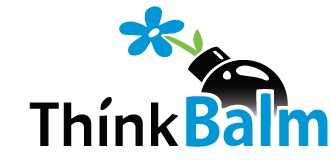- in Blog Articles by Erica Driver
Club One explores immersive tech for delivering training
I first met Celeste DeVaneaux, senior IT manager with Club One, Inc., in September at the 3DTLC conference
in San Jose. Over drinks at a Linden Lab cocktail party, she told me about Club One’s experiments with immersive technology. Club One’s story piqued my interest because their innovations in the realm of fitness-related habit-changing are applicable to corporate learning and development efforts. In both cases, a trainer or coach is trying to change the behavior of the learner. In Club One’s case the learner is a member of the fitness club. In more common enterprise scenarios, the learner may be an executive, new hire, or employee learning a new process or learning to use a new piece of equipment. So in mid-October I followed up with a more formal interview with DeVaneaux, who is the creative director on the project, responsible for the vision, design, and direction of Club One’s products in this area.
Company and program background
Club One is a fitness club network with 18 branded clubs in California and more than 60 corporate worksite health and fitness sites and community centers across the country. Employees are located in 90 sites around the country. The company has more than 140,000 members. One challenge the company faces is helping its members break habits that negatively affect their health.
To address this, the company offers a 42-day program called Habit Changer. The Habit Changer is a system for changing habits, using gentle reminders and daily challenges delivered through email, text, and the web for 42 days. It exposes the habits people have learned, helping make them aware of what they’re doing now and what they might want to do differently. Each daily challenge gets the participant to look at the decisions they make in their life from a new perspective, and provides them with the means to act in a different way.
A multi-phase approach to immersive technology
Club One’s work with immersive technology has been a multi-phase effort:
- Working with partner 2b3d to build a replica of a Club One fitness center in Second Life, to be used for sales and marketing
- Scripting animations and interactivity into the environment, and building custom avatars. With these, visitors can interact with objects like treadmills, yoga mats, and a swimming pool (see a video on YouTube — link is below).
- (Current phase) Creating a weight loss program to be delivered virtually by redesigning and incorporating Club One’s nutrition, exercise and Habit Changer programs and including a support group element to be delivered to distributed, remote participants
- (Future potential) Training the company’s 3,000 to 5,000 employees on everything from teaching exercise form to using equipment correctly to delivering personal training
Early lessons learned
Club One will be launching a pilot in January, during which three test groups of twenty people each will go through a 12-week program during which they will meet four times a week with nutritionists, exercise physiologists, and facilitators. Social interaction among the program’s participants, as well as learning through identification with one’s avatar, and concepts related to neuroplasticity, will be key focal points. The company is looking for a way to collect participants’ bio data (via scanning, measuring, or photos) and upload that data to generate an avatar that looks similar to the participant. Celeste DeVaneaux offers a few golden nuggets, based on her experiences so far:
- Talk short timeframes and small wins. “Virtual world concepts are difficult for most people to understand so it helped to talk in terms of one phase at a time, DeVaneaux said. “If I had tried to sell my entire vision early on, they would have never bought it.” She presented one phase of her project at a time to decision makers while ensuring that each stage of the design would support possible future endeavors.
- Choose your language carefully. As DeVaneaux talks about the work she is doing, she steers clear of words like “real” vs. “virtual.” She uses the term “carbon-based” or physical instead of “real,” and “digital” instead of “virtual.” She steers clear of the term “virtual” as much as possible because it has many meanings, especially for people in IT. Instead, she simply refers to the virtual Club One as “Club One Island.” (See the related Sept. 28th, 2009 ThinkBalm blog post “To cross the chasm, we must close the language gap,” and the Sept. 23rd, 2009 report Crossing the Chasm, One Implementation at a Time.)
- Look for creative ways to justify the investment. The company was considering having a physical 3D model built as a sales tool to be used during conversations with commercial real estate developers. To build Club One Island it cost about half of what it would have cost to build the physical 3D model. On top of that, Club One Island is interactive, collaborative, and can be used for many purposes. DeVaneaux found that what really grabbed the attention of the budget-holders at Club One was the possibilities for delivery of new services — and, potentially, new revenues.
